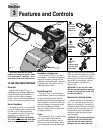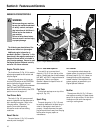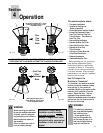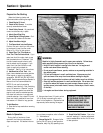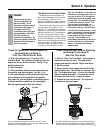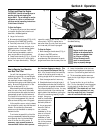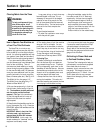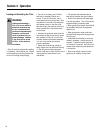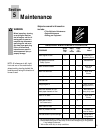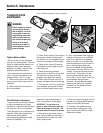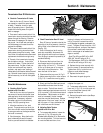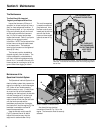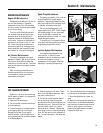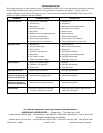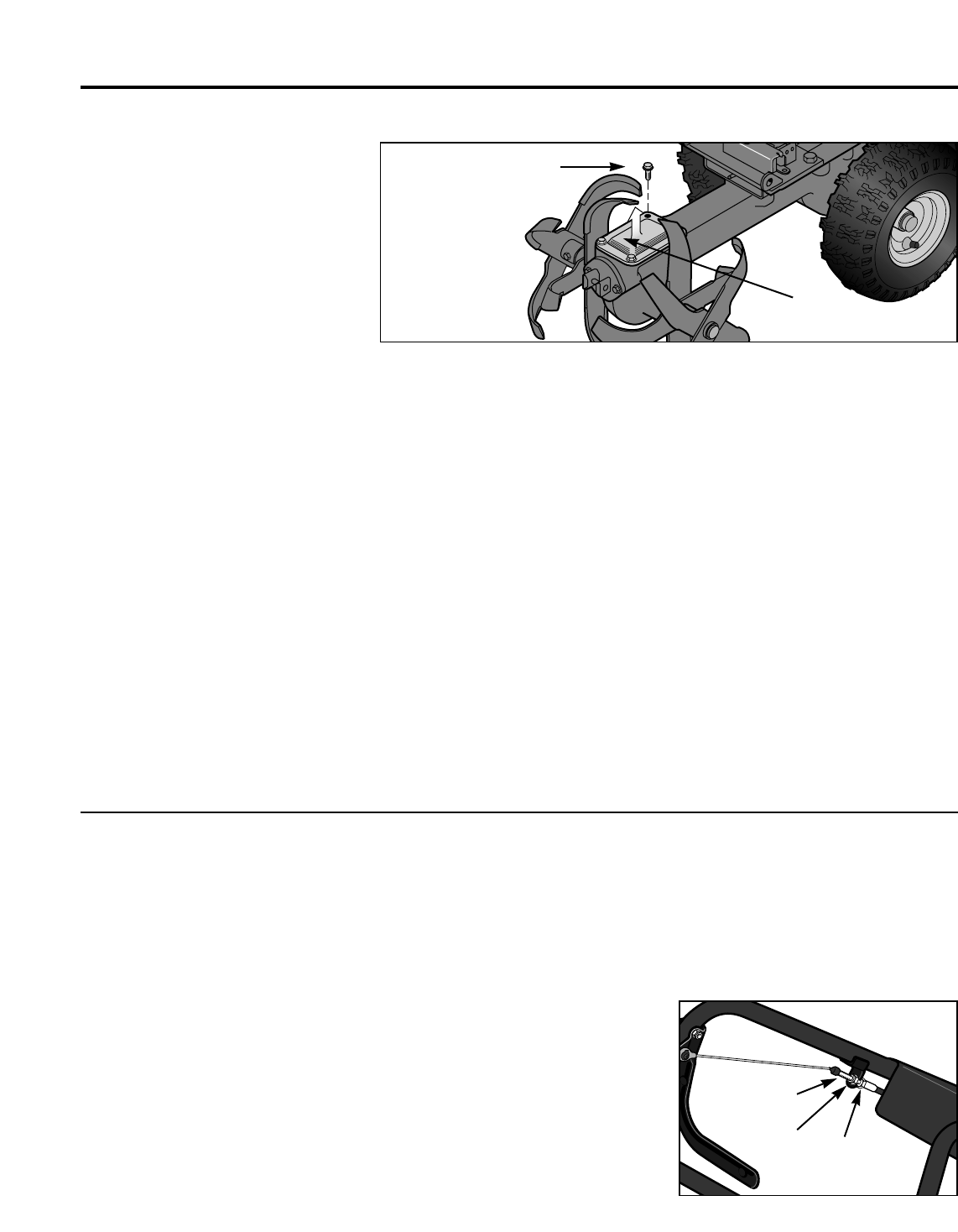
Section 5: Maintenance
21
Transmission Gear Oil Maintenance
A. Check for Transmission Oil Leaks
After the first two (2) hours of brand-
new operation, check the transmission for
oil leaks. Thereafter, check for leaks
every 25 operating hours. Specifically,
inspect the following areas for signs of
leaks or seepage:
1. There are oil seals on each side of the
transmission housing where the tine shaft
passes through the housing. Examine
those areas for seepage or for leaks on
the ground. An oil seal leak can lead to
internal damage, so the seal should be
replaced immediately.
2. There are oil seals on each side of the
transmission housing where the wheel
shaft passes through the housing. Leaks
from either of these seals also means seal
replacement should be done right away.
3. The end of the transmission housing
has a bolted on end cap. It should be
examined for leaks. Tighten the bolts if
they seem loose. If a gear oil leak con-
tinues, remove the end cap, clean its
surfaces, and apply a new coating of
rubberized silicone sealant behind the end
cap. Reinstall the end cap by tightening
the bolts securely, but do not overtighten
them.
B. Check Transmission Gear Oil Level
Every 25 hours of operation (and at the
beginning of the tilling season), check the
gear oil level in the transmission housing
(see Fig. 5-2).
1. Shut off the engine, let all moving
parts stop completely, disconnect the
spark plug wire and move the wire away
from the plug to prevent the possibility of
accidental starting.
2. Disconnect the tine hood from the
hood bracket and put the hood aside
(refer to Figs. 4-6 and 4-7). Tilt tine end
of tiller up to allow gear oil to move to
front cavity in the transmission. Then
lower tine end of tiller down.
3. Clean around the top cover (H, Fig. 5-
2) before removing the four cover screws
(I, Fig. 5-2). Loosen the cover by gently
tapping it sideways with a hammer (do
not pry it up with a screwdriver which
could damage the gasket underneath the
cover). The gear oil level should be 1-3/4"
below the topmost surface of the chassis
(this surface is machined) when level.
Add or remove gear oil as needed (use a
dipper or suction).
Small Top-0ffs: use SAE 140 or SAE
85W-140. Use API rating of GL-4 .
Full Replacement: SAE 140 or SAE 85W-
140 with an API rating of GL-4 only.
4. Replace the top cover securely with
the four screws (I) removed previously.
Tighten them firmly, but do not over-
tighten to avoid thread damage.
5. Replace the tine hood.
6. Reconnect the spark plug wire.
Drive Belt Maintenance
A. Checking Cable Tension
Applied to the Drive Belt
After the first two hours of operation,
the amount of tension that the bail lever
cable applies to the drive belt should be
checked and, if necessary, adjusted.
Thereafter, perform this check every
twenty-five (25) operating hours.
1. Move the machine to firm, level
ground. The equipment must be in the
front tine cultivator mode (the handlebar
is swung around over the engine and the
tine hood is removed).
2. Start the engine. Move the throttle
lever to between idle and full-speed.
Position yourself behind the handlebar.
3. Slowly pull the Drive Bail back toward
the handlebar and note when the tines
begin to rotate. The bail lever should
have traveled anywhere between one-third
(1/3) to one-half (1/2) the distance toward
the handlebar. Cable tension on the belt
must be increased if the bail traveled
more than one-half the distance. Reduce
cable tension if the tines “creep” with the
bail fully open or if they rotate when the
bail is less than one-third closed.
B. Adjusting Cable Tension
Applied to the Drive Belt
4. To increase cable tension, loosen the
upper nut (J, Fig. 5-3) securing the
threaded cable adjuster (K) to the handle-
bar mounting bracket. Turn the lower nut
to move the cable end down, then
retighten the upper nut.
5. To decrease cable tension, loosen the
lower nut (L, Fig. 5-3), turn the upper nut
to move the adjuster upward, then
retighten the lower nut.
6. Recheck the cable tension (see Steps
1 through 3 at left).
Fig. 5-2: Remove transmission top cover to check the level of gear oil.
Fig. 5-3
H
I
J
K
L



